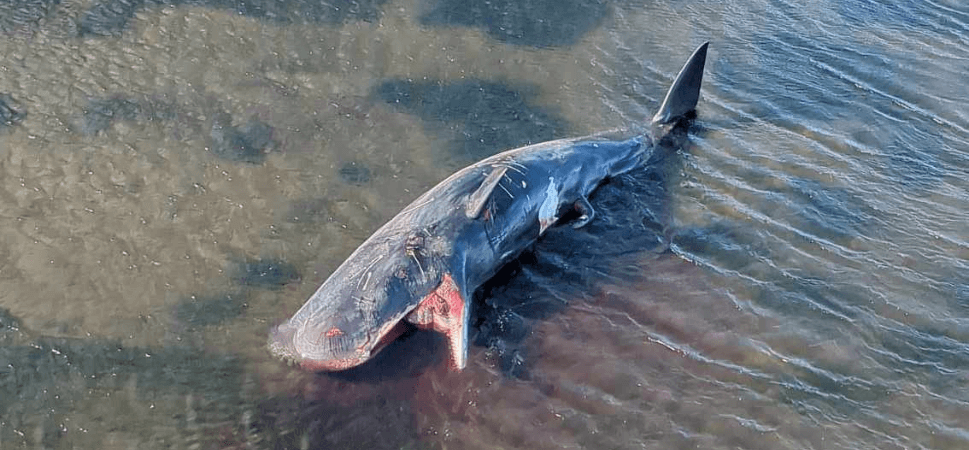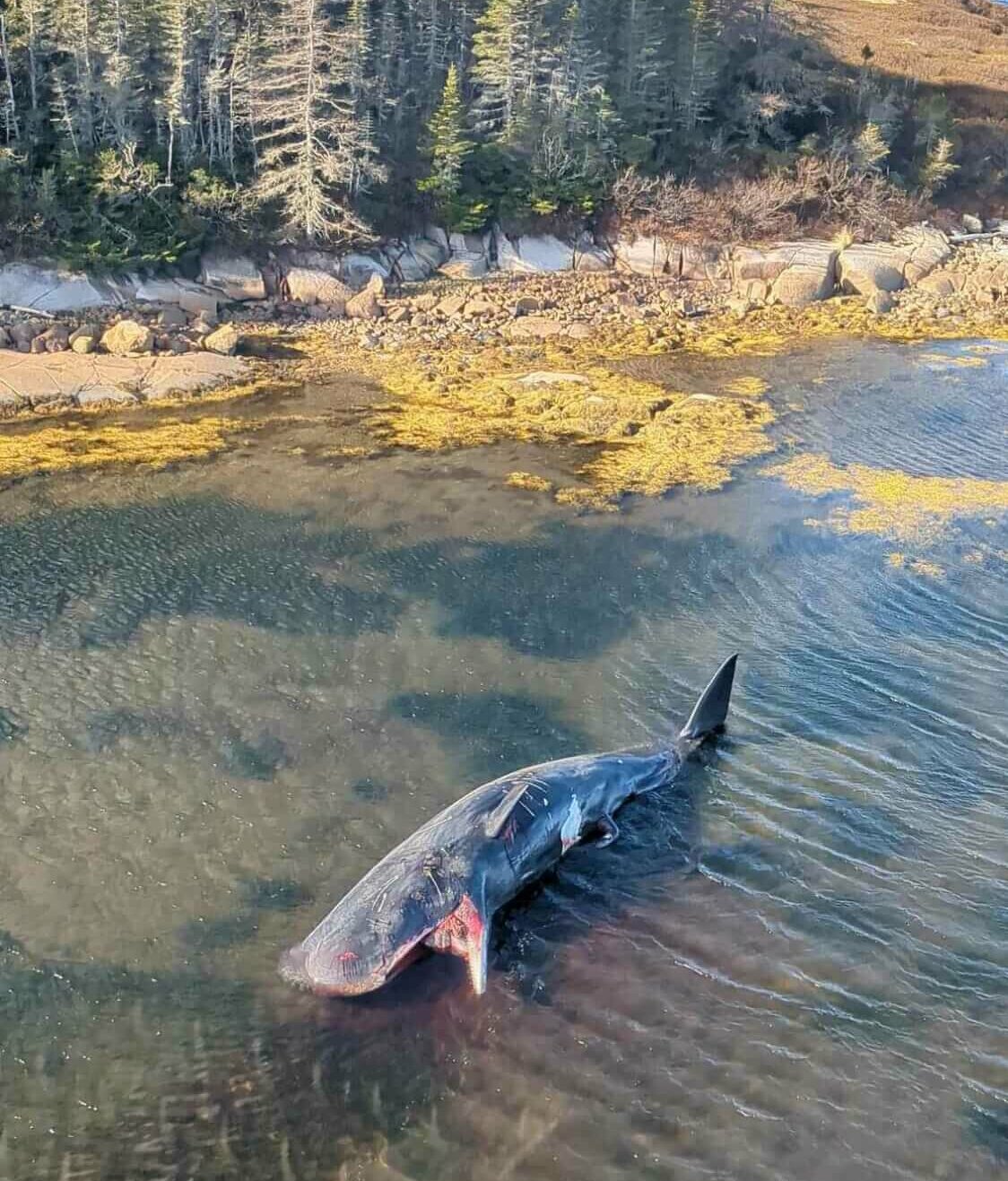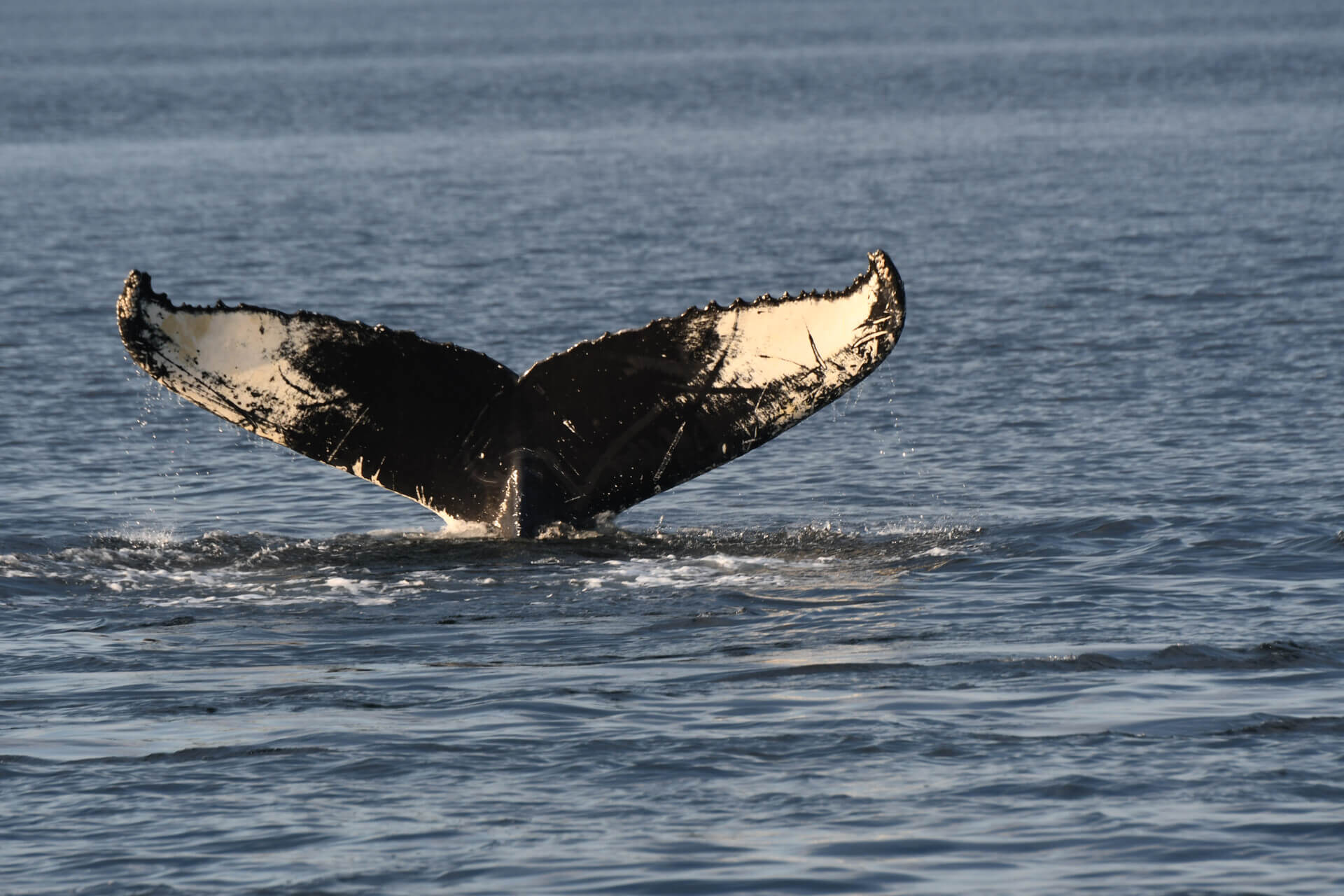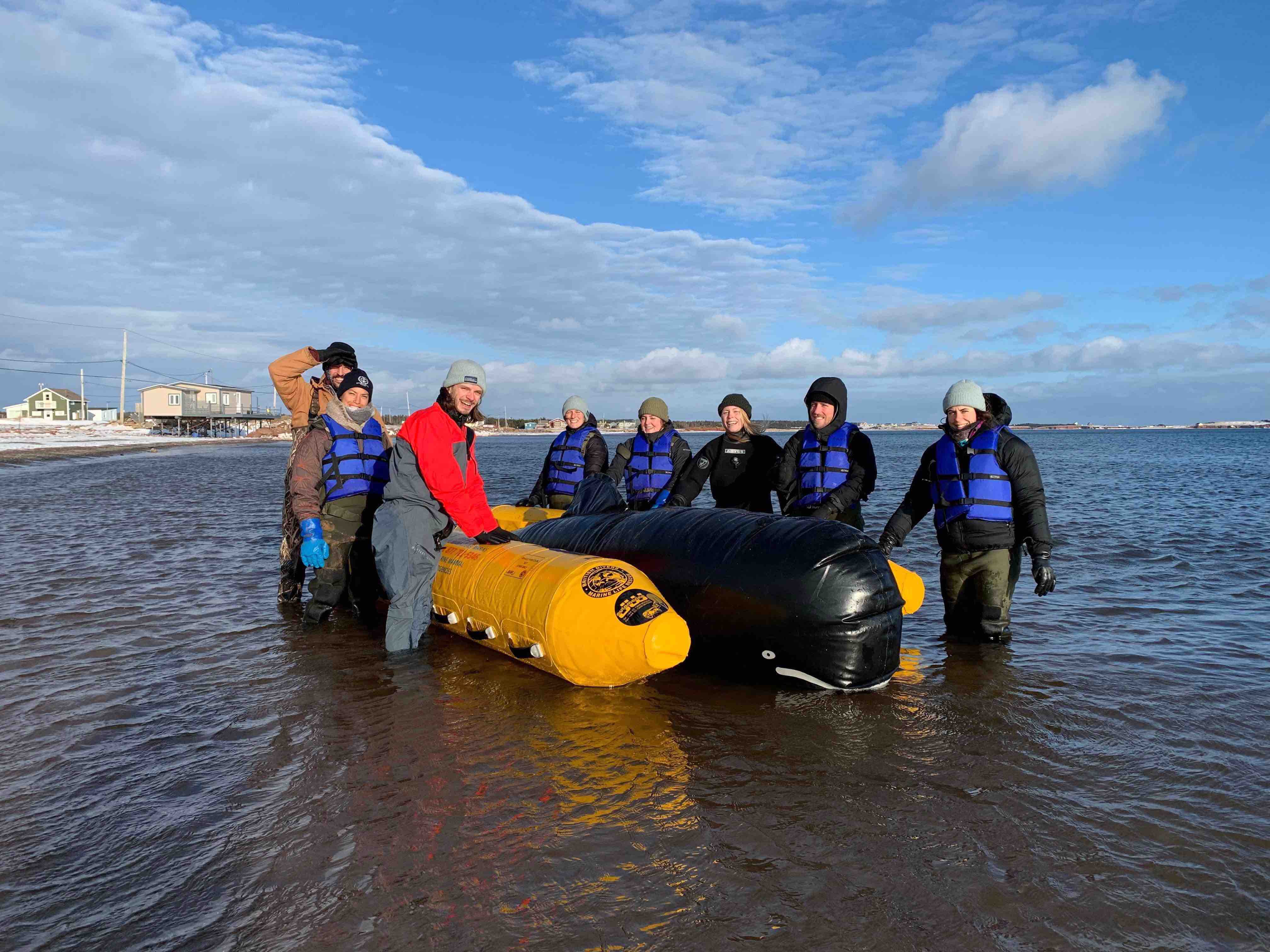On November 6, flying above the gulf fifteen kilometres from the village of Baie-Johan-Beetz, a helicopter pilot notices a greyish mass lying in the shallow waters near the edge of a small island. Hovering over the site, he manages to photograph the creature: a long, lifeless sperm whale, its mouth agape.
Wisely, he does not attempt to approach the carcass by himself. Instead, he uses his contacts to forward information to the Quebec Marine Mammal Emergency Response Network (QMMERN) – a team of first responders for marine mammals.
To act or not to act?
With spotty access to the cellular network, the pilot manages to transmit the GPS coordinates of the beast only the following Thursday, nearly four days after the initial observation. This time lag makes it harder to assess the situation, as the carcass may very well have moved with the currents since it was first spotted. The team therefore runs the risk of making considerable effort to reach a difficult-to-access location, where it might ultimately find nothing but traces of the animal’s presence. Additionally, if it is still there, the carcass, which was already in an advanced state of decay, will likely have decomposed even further. Within QMMERN, questions are being asked: Is it even realistic to try to reach the animal? What can be done in the short term?
Faced with such a dilemma, two major factors weigh in the balance: the scientific interest of the carcass and how easy (or difficult) it is to access.
An intriguing discovery
Is there a research project that can be undertaken on this species? Is the species threatened? Could the skeleton of this individual be of particular interest? These are the kinds of considerations that QMMERN members and their partners must take into account when analyzing the interest of a carcass.
In the case of the sperm whale, its presence on this beach may be interesting from a scientific point of view, as this species is very scarce in St. Lawrence waters. We may notably wonder what explains this unique find in the vicinity of Baie-Johan-Beetz.
Over the years, only 30 or so individuals have been photographed by GREMM and no sperm has regularly frequented the estuary since 2009. This summer there were two individuals that ventured as far as Sept-Îles, but did not remain in the area. The last sperm whale to have visited the estuary on an annual basis was named Tryphon, which was recognizable by the notches around the contour of its tail. Unfortunately, Tryphon died following an entanglement in fishing gear, 18 years after he was first observed in the sector. Since then, no individual has regularly visited the waters of the St. Lawrence.
Given the rarity of sperm whales in the St. Lawrence, none of QMMERN’s partners is carrying out any research specifically dedicated to this species. Nor is the sperm whale considered threatened, though it has been classed as “Vulnerable” by the IUCN. Considering the difficult access to the beached animal and the uncertainty in the location and the current state of the carcass, the emergency team does not consider it essential to collect data at the current juncture.
An isolated carcass
Additionally, the whale’s carcass is 600 metres from the closest shore, meaning it is only accessible by boat. Furthermore, the banks from which specialists might try to launch their watercraft are several kilometres from the nearest road and in marshy and rocky terrain, which makes the location difficult to access and the mission unsafe. Despite everything, the network team is not discouraged by the task at hand and is analyzing a number of potential response scenarios.
In light of all this information, QMMERN ultimately decides that it is preferable not to act for the time being. Also taking into account the possibility that the animal has moved with the tides, the team has elected to wait for further updates. Meanwhile, the pilot is expected to fly over the area again in the weeks to come. If the carcass is still there, members of the network might consider travelling to the site this winter on a snowmobile, when the surrounding ice is sufficiently solid, in order to re-assess the situation.







